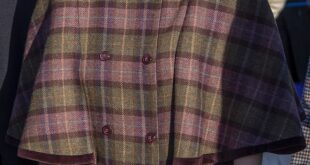Wood engraving commands laborious attention to detail, but the effects can be entrancing and varied. A new exhibition at the Ashmolean celebrates a British phenomenon that continues to fascinate.
Britain has invented numerous sports — tennis, cricket, tossing the caber — but can only claim to have come up with one art form: wood engraving. It is the perfect medium for the times we are living through, creating images that are generally small, precise and detailed — just the thing for careful study and contemplation during lockdown.
Thomas Bewick, the 18th-century Northumbrian engraver, devised the technique, using metal engraving tools to cut finely prepared boxwood across the grain to produce a block that could be incorporated with metal type; the resulting illustrations could be run off in greater numbers and to a higher quality than previous woodcuts, which were coarser and less durable. Bewick’s subjects were birds, animals and rural scenes — wood engraving has been coloured with nostalgia and the Romantic ever since.
The medium came of age when the Society of Wood Engravers (SWE) was established in 1920. Oxford’s Ashmolean Museum, with many wood engravings in its print room, has put on a show to display what has happened in the century since then. It concludes with a pop-up shop where visitors can buy examples of the work they’ve seen, or similar pieces, at surprisingly affordable prices.
Tortoise and Snails by Chris Wormell. ©Ashmolean Museum Oxford
That is one of the charms of wood engraving for the collector: it rarely commands big money — much to the frustration, no doubt, of the artists who devote hours of eye-straining labour to their task. You only have to look at the complexity and detail of some of the images — Peter Lazarov’s Sisyphus of 2008, for instance, which shows two giant beetles labouring to roll a town across a landscape — to realise that this is a technique for obsessives.
A depiction of two strips of wall-paper and a drawing, pinned to a wall, by Edwina Ellis is entitled Pride: made in 1986, without the use of colour, it manages to achieve the verisimilitude of trompe l’oeil. That is part of the fascination of the show: the sheer obduracy of the technique compels artists to extract seemingly impossible effects from it.

Pride by Edwina Ellis. ©Ashmolean Museum Oxford
The founding members of the SWE, including Eric Gill and Gwen Raverat, relished the clarity and drama of the medium. In the work of Clare Leighton, wood engraving, once so bucolic, could be pressed into the service of gritty reportage, as in her Bread Line, New York of 1932. Despite their small size, Leighton’s Landing and Cider-Making, from the early 1930s, portray agricultural work in a heroic light, similar to that of Russian Social Realism.
Iain Macnab of Barachastlain’s Mediterranean images, before and after the Second World War, similarly pitch theatrically black shadows against patches of bright light, although there is more gentle humour than social message to his print of Corsican women gossiping across their balconies.

Agnes Miller Parker’s The Challenge. ©Ashmolean Museum Oxford
After Bewick, wood engraving was seized upon by the visionary artists Samuel Palmer and William Blake: their tradition lives on in works such as the Swedish artist Eva Stockhaus’s Seagulls in the Wind, 1968, and Monica Poole’s Dead Trees Sheppey, 1976.
At the other extreme, its evocative whimsicality had a commercial value for whisky distilleries’ labelling, such as Glenmorangie, or, in the case of the Royal Mail’s Twelve Days of Christmas series in 1977, postage stamps. David Gentleman, who engraved the stamps, also saw his work blown up to epic size on the platforms of Charing Cross station: medieval craftsmen are shown making the Eleanor Cross that now exists in replica in the station forecourt.
The Charing Cross mural inspired Hilary Paynter to propose a scheme illustrating local scenes to Nexus, the transport company responsible for the Newcastle Metro, in 2003. Sadly, her panels were removed from the underground platforms and repositioned on a reduced scale elsewhere — a pity, since ‘they were designed to be seen at floor level [with] details for children to spot.’ The artist was living next to Cherryburn, Bewick’s birthplace, at the time.
Observation of the natural world, Bewick’s speciality, remains a theme of this genre — Chris Wormell, well known to Country Life, is represented with a picture of a tortoise and snails — but this bewitching and most demanding of media continues to excite experiment. It’s still used, on occasion, in conjunction with the printed word, as Bewick intended: Mr Wormell recently illustrated Philip Pullman’s best-selling Book of Dust.
Congratulations to the Ashmolean for producing an excellent catalogue to accompany the exhibition. Take it home, for there is so much to pore over and enjoy.
Pictures courtesy of the Ashmolean Museum, Chris Wormell, Edwina Ellis and the Estates of Agnes Miller Parker and Ian Macnab.
‘Scene Through Wood: A Century of Wood Engraving’ is at the Ashmolean Museum, Beaumont Street, Oxford, until November 15 — www.ashmolean.org

Credit: Beaverbrook Collection of War Art at the Canadian War Museum Ottawa, www.warmuseum.ca.
Huon Mallalieu welcomes the opportunity to see a significant body of wartime paintings alongside other works by Munnings in his

Credit: Alamy
Laura Freeman examines the brilliance and bravado of Eugène Delacroix’s paintings – including an extraordinary recreation of one of the most

Credit: Boreray and the Stacs by Norman Ackroyd – 2010 (©Norman Ackroyd)
This week marks the last chance to see Norman Ackroyd’s sublime exhibition in Richmond. Lilias Wigan urges you to take
Source link



